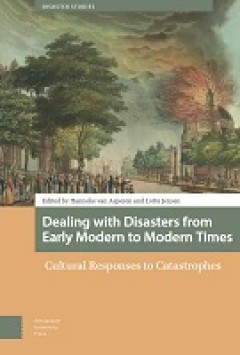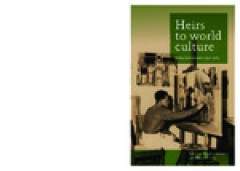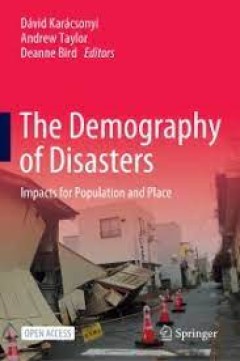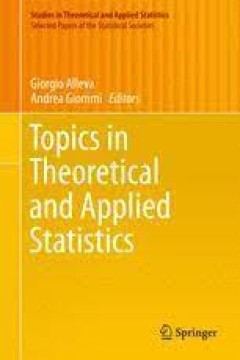Filter by

Globalizing the Soybean: Fat, Feed, and Sometimes Food, c. 1900–1950
Globalizing the Soybean asks how the soybean conquered the West and analyzes why and how the crop gained entry into agriculture and industry in regions beyond Asia in the first half of the twentieth century. Historian Ines Prodöhl describes the soybean’s journey centered on three hubs: Northeast China, as the crop’s main growing area up to the Second World War; Germany, to where most of…
- Edition
- -
- ISBN/ISSN
- 9781000877342
- Collation
- -
- Series Title
- -
- Call Number
- -

Dealing with Disasters from Early Modern to Modern Times
Disasters are as much cultural as natural phenomena. For centuries, news about catastrophic events has been disseminated through media such as chronicles, pamphlets, newspapers, poems, drawings, and prints. Nowadays, we are overwhelmed with news about the cataclysmic effects of recent forest fires, floods, and storms. Due to the ongoing climate crisis, extreme weather events will likely have ev…
- Edition
- -
- ISBN/ISSN
- 9789048557707
- Collation
- -
- Series Title
- -
- Call Number
- -

Evidence in Action between Science and Society
This volume is an interdisciplinary attempt to insert a broader, historically informed perspective into current political and academic debates on the issue of evidence and the reliability of scientific knowledge. The tensions between competing paradigms, different bodies of knowledge and the relative hierarchies between them are a crucial element of the historical and contemporary dynamics of s…
- Edition
- -
- ISBN/ISSN
- 9781032037059
- Collation
- -
- Series Title
- -
- Call Number
- -

Turning Points in the History of Mathematics
This book explores some of the major turning points in the history of mathematics, ranging from ancient Greece to the present, demonstrating the drama that has often been a part of its evolution. Studying these breakthroughs, transitions, and revolutions, their stumbling-blocks and their triumphs, can help illuminate the importance of the history of mathematics for its teaching, learning, and …
- Edition
- -
- ISBN/ISSN
- 978-1-4939-3264-1
- Collation
- -
- Series Title
- -
- Call Number
- -

Sustainable phosphate management: Environmental and Social life cycle assessm…
Phosphorus is a crucial element in agriculture to feed the fast-growing global population. Its sustainable supply has ecological, social and human dimensions and it is classified as critical to European industries. On the other side, phosphate can also be critical for the producing countries as phosphate mining contributes to their national economies. This work investigates implications of envi…
- Edition
- -
- ISBN/ISSN
- 9783731512486
- Collation
- -
- Series Title
- -
- Call Number
- -

Twilight of the Anthropocene Idols
Following on from Theory and the Disappearing Future, Cohen, Colebrook and Miller turn their attention to the eco-critical and environmental humanities’ newest and most fashionable of concepts, the Anthropocene. The question that has escaped focus, as “tipping points” are acknowledged as passed, is how language, mnemo-technologies, and the epistemology of tropes appear to guide the accele…
- Edition
- -
- ISBN/ISSN
- 9781785420160
- Collation
- -
- Series Title
- -
- Call Number
- -

Heirs to world culture; Being Indonesian 1950-1965
This volume brings together new scholarship by Indonesian and non-Indonesian scholars on Indonesia’s cultural history from 1950-1965. During the new nation’s first decade and a half, Indonesia’s links with the world and its sense of nationhood were vigorously negotiated on the cultural front. Indonesia used cultural networks of the time, including those of the Cold War, to announce itself…
- Edition
- -
- ISBN/ISSN
- 9789004253513
- Collation
- -
- Series Title
- -
- Call Number
- -

A Global Humanities Approach to the United Nations’ Sustainable Development…
Cowspiracy; Environment and sustainability; Environmental humanities; SDGs; Sustainable Development Goals;Teaching Sustainability; The White tiger
- Edition
- -
- ISBN/ISSN
- 9781003388869
- Collation
- -
- Series Title
- -
- Call Number
- -

The Demography of Disasters Impacts for Population and Place
This open access book provides worldwide examples demonstrating the importance of the interplay between demography and disasters in regions and spatially. It marks an advance in practical and theoretical insights for understanding the role of demography in planning for and mitigating impacts from disasters in developed nations. Both slow onset (like the of loss polar ice from climate change) an…
- Edition
- -
- ISBN/ISSN
- -
- Collation
- -
- Series Title
- -
- Call Number
- -

Topics in Theoretical and Applied Statistics
This book highlights the latest research findings from the 46th International Meeting of the Italian Statistical Society (SIS) in Rome, during which both methodological and applied statistical research was discussed. This selection of fully peer-reviewed papers, originally presented at the meeting, addresses a broad range of topics, including the theory of statistical inference; data mining and…
- Edition
- -
- ISBN/ISSN
- 978-3-319-27274-0
- Collation
- -
- Series Title
- -
- Call Number
- -
 Computer Science, Information & General Works
Computer Science, Information & General Works  Philosophy & Psychology
Philosophy & Psychology  Religion
Religion  Social Sciences
Social Sciences  Language
Language  Pure Science
Pure Science  Applied Sciences
Applied Sciences  Art & Recreation
Art & Recreation  Literature
Literature  History & Geography
History & Geography